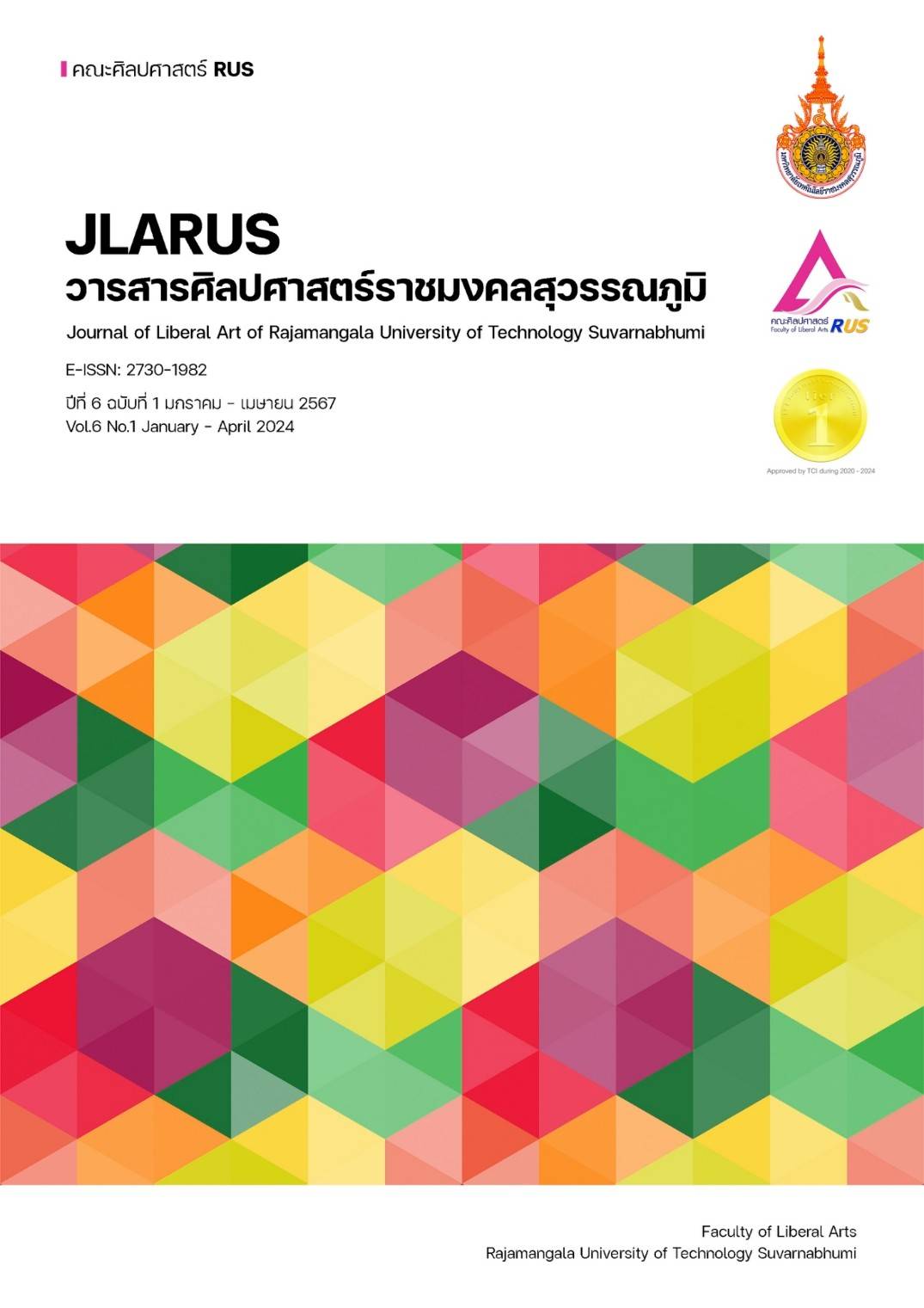EXPLORING CULTURAL TRANSMISSION IN CHINESE PAPER-CUTTING PRODUCTS: A STUDY AND ANALYSIS UTILIZING BIG DATA FROM SOCIAL MEDIA PLATFORMS
Main Article Content
Abstract
This study aimed to: 1) identify and analyze the main focal points of public opinions regarding paper-cutting products on social media platforms, 2) determine and profile the users actively engaging in discussions about paper-cutting products, and 3) explore and understand the overall attitudes of the public on social media platforms towards paper-cutting products. The research utilized big data analysis techniques with Weibo as the primary data source, comprising 7,042 posts and 104,042 comments spanning a decade (2013-2022).
The study findings revealed: 1) Paper-cutting products were recognized for their profound cultural value as traditional intangible heritage, fostering emotional connections and preferences among the public. The uniqueness, cultural sustainability, creativity, and innovation associated with paper-cutting contribute significantly to its popularity. 2) User activity trended on Weibo demonstrate a significant increase in posting numbers, particularly from official accounts promoting traditional culture, highlighting government support for preserving intangible cultural heritage. and 3) The sentiment analysis of Weibo posts indicated that the majority of people hold a positive attitude towards paper-cutting products, despite some negative sentiments. This also shed light on the current challenges and difficulties faced by Chinese paper-cutting products.
The study validated the applicability of combining the Charm Quality Theory with the Theory of Planned Behavior in the cultural product domain. Ultimately, this provided actionable insights for managers, emphasizing the role of social media in cultural product promotion and understanding public preferences. This contributed to the preservation and promotion of traditional cultural art forms, aligning with UNESCO's cultural promotion advocacy and the United Nations' development goals.
Article Details

This work is licensed under a Creative Commons Attribution-NonCommercial-NoDerivatives 4.0 International License.
References
Ajzen, I. (1991). The theory of planned behavior. Organizational behavior human decision processes, 50(2), 179-211.
Ajzen, I. (2002). Perceived behavioral control, self‐efficacy, locus of control, and the theory of planned behavior 1. Journal of applied social psychology, 32(4), 665-683.
Anderson, J. R. (2009). How can the human mind occur in the physical universe?. Oxford: Oxford University Press.
Bortolotto, C., Demgenski, P., Karampampas, P., & Toji, S. (2020). Proving participation: vocational bureaucrats and bureaucratic creativity in the implementation of the UNESCO Convention for the Safeguarding of the Intangible Cultural Heritage. Social Anthropology/Anthropologie Sociale, 28(1), 66-82.
Chai, W., Ong, H. Y., Amini, M., & Ravindran, L. (2022). The art of paper cutting: Strategies and challenges in Chinese to English subtitle translation of cultural items. Journal of Modern Languages, 32(1), 84-103.
Den, W. (2014). Community empowerment and heritage conservation: The experience of Beitou District in Taipei City, Taiwan. The Historic Environment: Policy Practice, 5(3), 258-274.
Ghazali, I., Abdul-Rashid, S. H., Dawal, S. Z. M., Irianto, I., Herawan, S. G., Ho, F.-H., . . . Padzil, N. W. S. (2023). Embedding Green Product Attributes Preferences and Cultural Consideration for Product Design Development: A Conceptual Framework. Sustainability, 15(5), 4542.
Goldenberg, J., & Mazursky, D. (2002). Creativity in product innovation. Cambridge: Cambridge University Press.
Han, H., Eom, T., Chung, H., Lee, S., Ryu, H. B., & Kim, W. (2019). Passenger repurchase behaviours in the green cruise line context: Exploring the role of quality, image, and physical environment. Sustainability, 11(7), 1985.
Kano, N. (1984). Attractive quality and must-be quality. Hinshitsu, 14, 39-48.
Lazaro Ortiz, S., & Jimenez de Madariaga, C. (2022). The UNESCO convention for the safeguarding of the intangible cultural heritage: a critical analysis. International journal of cultural policy, 28(3), 327-341.
Li, J., Krishnamurthy, S., Roders, A. P., & Van Wesemael, P. (2020). Community participation in cultural heritage management: A systematic literature review comparing Chinese and international practices. Cities, 96, 102476.
Luor, T. T., Lu, H.-P., Yu, H., & Lu, Y. (2015). Exploring the critical quality attributes and models of smart homes. Maturitas, 82(4), 377-386.
Saggi, M. K., & Jain, S. (2018). A survey towards an integration of big data analytics to big insights for value-creation. Information Processing Management Science, 54(5), 758-790.
Sniehotta, F. F., Presseau, J., & Araújo-Soares, V. (2014). Time to retire the theory of planned behaviour. In H. p. review (Ed.), (Vol. 8, pp. 1-7): Taylor & Francis.
Tu, J.-C., Liu, L.-X., & Cui, Y. (2019). A study on consumers’ preferences for the Palace Museum’s cultural and creative products from the perspective of cultural sustainability. Sustainability, 11(13), 3502.
UNESCO. (2003). Text of the Convention for the Safeguarding of the Intangible Cultural Heritage. Retrieved December 10, 2022. from https://ich.unesco.org/en/conven tion.
Yadollahi, A., Shahraki, A. G., & Zaiane, O. R. (2017). Current state of text sentiment analysis from opinion to emotion mining. ACM Computing Surveys, 50(2), 1-33.


